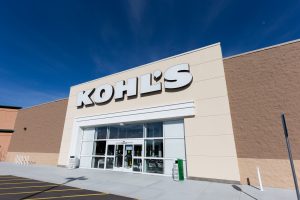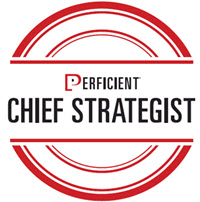Delivering seamless, consistent, and engaging experiences starts with a customer-centered digital strategy. This ongoing series explores the characteristics that make up a great digital strategy and how to deliver powerful brand moments that solidify customer loyalty and drive differentiation for your organization.
Innovation is not just about technology
As we work with clients, we find a lot of correlation (and often some confusion) between their digital, innovation, and customer experience strategies. Many think innovation relates directly to digital, but technology is only one part of the equation.
It’s true that many of today’s up and coming business models are tightly coupled with new or emerging technology. Uber is a great example. The experience it provides would not be possible without mobile and geolocation technology. However, when you look past the digital component, you can see that Uber is really built on a sharing economy business model. By connecting riders directly with drivers who own vehicles, the company has disrupted traditional transportation services and changed consumer behavior and expectations. ‘
Not every organization needs to be like Uber, but we view emerging business models as a digital essential because it’s important to know what emerging models are made of and how they can be adapted to fit your organization. It also helps to understand and recognize a few of the emerging models prominent today.
What business models are emerging right now?
Sharing Economy and Fractional Ownership
Sharing economy and fractional ownership function differently, but both answer the growing consumer desire to bypass traditional ownership and only consume and pay for what’s actually needed. For example, some consumers have done the math and determined that if they can supplement walking to work with a ride-hailing service, then they can avoid the burden of purchasing, insuring, and maintaining their own vehicle.
Sharing or “access” economies entail connecting to another private individual, usually through a mobile app or website run by an intermediary organization, to gain temporary access to property, such as a car or living space, owned by that person. This is Uber, Airbnb, Neighbor, Rover, and other apps you’re using to connect with a trusted stranger in order to accomplish a task. Sharing economy-powered organizations have been shaking things up for a while now, and are continuing to grow in popularity and expand across industries.
Fractional ownership also enables individuals to save money by only paying for what they need, but (as the name implies) they share ownership of a property either with other individuals or with an organization. Think time-share but without the annoying pitch. For example, I recently spoke with a mortgage company that offers the option to concurrently rent and have a mortgage on a piece of property. Non-traditional options like this provide flexibility and customization for consumers and can have applications across industries, including other big-ticket items such as cars, vacation properties, and even private jets.
Data Monetization
I’ve already talked about Uber, but the ride-hailing pioneer provides a great example of expanding its business by monetizing its proprietary data to become profitable.
Every time someone uses Uber, which happens about 14 million times per day, Uber collects data about the rider, the driver, the pick-up and drop-off locations, traffic conditions, and more. With 10 billion individual trips under its belt (and counting), Uber has collected a lot of data, and it makes business sense that the company would capitalize on that asset by selling anonymized data to third parties, or, more importantly, use that data to provide value-added interpretations and insights based on the resulting data sets.
Uber’s not the only company selling the data it collects on users – not by a long shot. The big question, of course, is whether these companies can do so while also respecting and protecting users’ (and drivers’, in Uber’s case) data. As privacy regulations like GDPR and the California Privacy Protection Act roll into place, companies must prioritize ethical treatment of data or risk legal penalties and lost customer trust.
Direct-to-Consumer
Direct-to-consumer sales has been around for quite a while, but this business model has grown exponentially through the consumerization of the internet and the advent of eCommerce. This model is influencing many organizations outside of traditional consumer goods, particularly with B2B brands that are connecting directly with their end users and owning more of the customer experience surrounding their product.
Online Only to Brick and Mortar
Just when the world was predicting the end of traditional brick-and-mortar stores, previously digital-only companies like Amazon and Warby Parker began investing in physical locations. Why is that? Roughly 80% of the US population lives in urban areas. That’s a lot of customers, really close together – a lot of customers who expect two-day shipping, easy returns, and for their favorite brands to make their lives easier.
Online-only brands also want to keep up with those expectations. This creates the need to have a strong distribution infrastructure in place, which might mean experimenting with localized experience centers like showrooms and return drop-off points.

Source: Kohl’s
Some brands partner with other organizations to fill this gap. Kohl’s, for example, recently announced that all of its brick-and-mortar stores nationwide would start accepting Amazon returns. This move will likely prove successful for both companies as Amazon customers enjoy returning items without the hassle and cost of shipping. And, Kohl’s benefits from the foot traffic those returns bring into its stores.
Inventory-Free Retail
As I just mentioned, many retailers recognize that their physical footprints provide a competitive advantage in an industry where everyone has an eCommerce site. Showrooming has been a trend in retail for several years, but some companies are experimenting further on the concept by completely removing inventory from the equation.
Nordstrom provided a perfect example of inventory-free retail in 2017 when it opened its first Nordstrom Local concept store. The purpose is to provide everything a customer could want from an in-store experience – except inventory, which they can purchase online. These service-oriented locations are much smaller than traditional Nordstrom department stores and serve as pick-up and drop-off points for online purchases and returns, personal styling and tailoring hubs, and venues for public and loyalty program member events.
The fact that Nordstrom recently announced the expansion of the Nordstrom Local footprint – adding two New York City locations to the three existing Los Angeles locations – shows that the company sees value in this new avenue of customer experience. Nordstrom stated that the expansion is, “part of its growth strategy and ongoing commitment to better serve customers no matter when, where, or how they shop.”
Subscription Services in New Sectors
Subscription services are everywhere – from streaming services replacing our cable TV to the monthly box of treats and toys for our dogs. Brands across the consumer goods sector (and consumables) are constantly looking for ways to turn a customer’s semi-frequent purchase or need into a committed relationship with a steady revenue stream. This trend is expanding into other areas of daily life.
In healthcare, for example, the concierge medicine model is becoming increasingly popular among physicians and patients. If an individual doesn’t want to deal with the burden of finding a doctor and scheduling appointments, they can subscribe and have those administrative tasks taken care of for them. As consumers see the benefit and convenience of outsourcing tedious tasks like scheduling medical appointments, service-focused subscriptions will become increasingly prevalent.
In the end, it’s about solving problems
These new business models have a common theme: invest in experiences and relationships centered around solving customers’ problems, rather than selling products or services.
While Uber strives to be the “Amazon of Transportation,” automotive manufacturers like Ford and Toyota are also expanding the scope of their services. They want to encompass the entire transportation experience – shopping, purchasing, financing, maintenance, repeat – and transition from manufacturers to mobility organizations. For example, Ford equips fleet vehicles with telematics capabilities and can provide purchasing organizations with data-driven insights on fleet activity and performance, which positions it as a solutions partner instead of just a manufacturer.
We’re seeing the same trend in telecom and utilities organizations. Rather than just selling phones and wireless service, AT&T wants to be customers’ partner in communication, connecting them with friends, family, work, and the rest of the world. Beyond just billing customers for monthly usage and receiving calls during outages, utilities companies want to help customers monitor their energy usage, find the right smart appliances, implement green energy practices, and accomplish other energy-savings goals.
So, what should you be doing about it?
Know your customers
As I explained earlier, be aware of what other organizations are doing, both within and outside your industry, and recognize how they may be impacting your customers’ expectations. Customer wants, needs, and behavior change all the time, and I’m often surprised how many companies don’t continually update their understanding of their audience. If you don’t understand your customers, you’re not going to be able to improve their experiences.
Look for ways to build on what you have
As you’re improving and expanding your digital experience and capabilities, look for ways to make the most out of the tools you have. Digitizing any interaction fundamentally creates a new source of data you can use to improve your customer experience and potentially expand into a new business model.

For example, if you’re using analytics to monitor what people are looking at on your website, maybe you can extend that to mobile. Now you can see where people are when searching for your products. Are they in your stores? Are they at a stadium? Are they tailgating out of town? Can we connect them with other fans and create a fan experience?
Adopt a design thinking approach
We love the phrase “Think big. Start small. Move fast.” If you want to innovate safely but also quickly, you need to adopt a Design Thinking approach. This means starting with an open mind and working in small, experimentally based phases in iterations.
This methodology allows you to try something out with a small audience, test, learn, and repeat until the best version of your new idea is ready. It also helps you recognize when an idea is just not going to work, which is an important part of the process. It’s okay to throw out a bad idea as long as you’re learning from it.
Balance your innovation portfolio
There may be times when you feel you need to dive into a new business model, maintain what you’re already doing, and play catch-up all at once. You’ll never have enough time or money to do everything you want, so developing a balanced innovation portfolio is a crucial step to narrow your focus.
We use an approach called Now/New/Next, which helps companies develop that balanced portfolio. In the Now/New/Next model, we organize the client’s experiences and capabilities into six categories across the spectrum of innovation, ranging from sustaining to disruptive. We can then define a strategic roadmap of short and long-term actions that will help the client expand and evolve, while also fortifying its strength areas.
Don’t get stuck in the trap of believing your organization is too conservative or too invested in your current strategy to change or leverage an emerging business model. There is always opportunity to improve your organization and the best way to start is to be open to new ideas.
Creating stand-out digital customer experiences that attract, engage, and retain customers is a tall order. Perhaps you’ve already done some of the foundational work, and you need help with the next step.
When working with clients, we help make sure you know your customers and understand their journeys. Through design-thinking tools, industry research, and pragmatic ideation to execute from end-to-end, you will have what it takes to deliver experiences that surprise and delight your customers.
Ready to get started with your digital strategy? Dive in for more resources.


